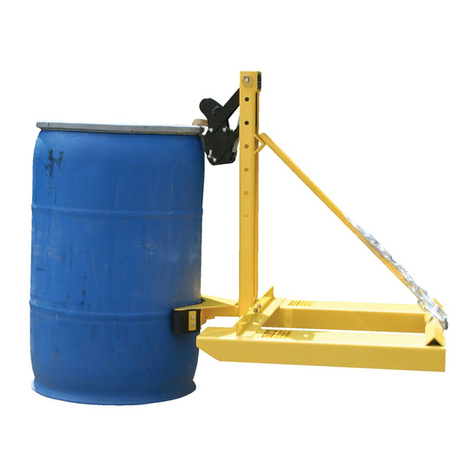Vestil A-LIFT-R User manual
Other Vestil Lifting System manuals

Vestil
Vestil FPG Series User manual
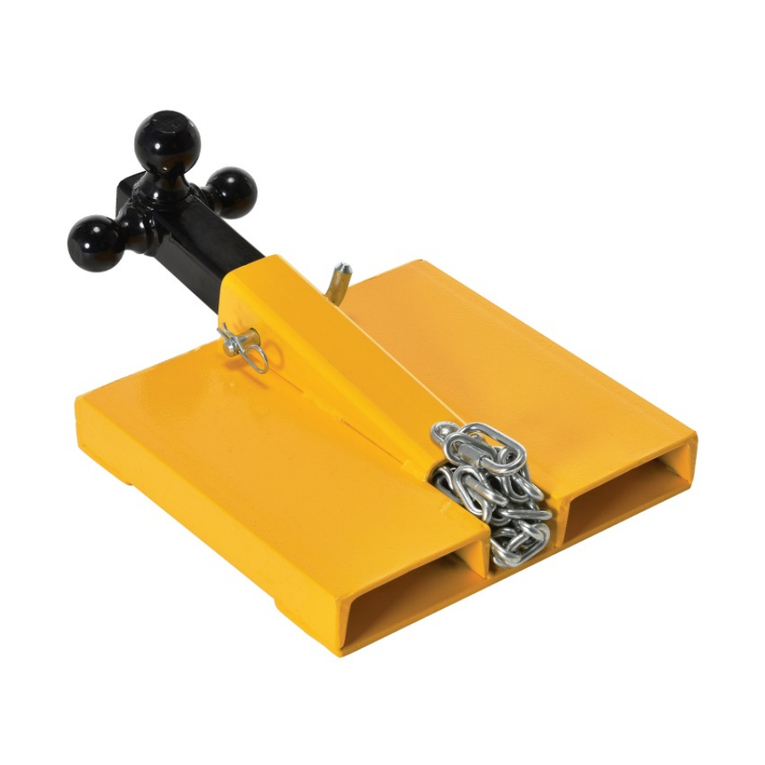
Vestil
Vestil FTTM-2 Instruction Manual

Vestil
Vestil MRR Series User manual
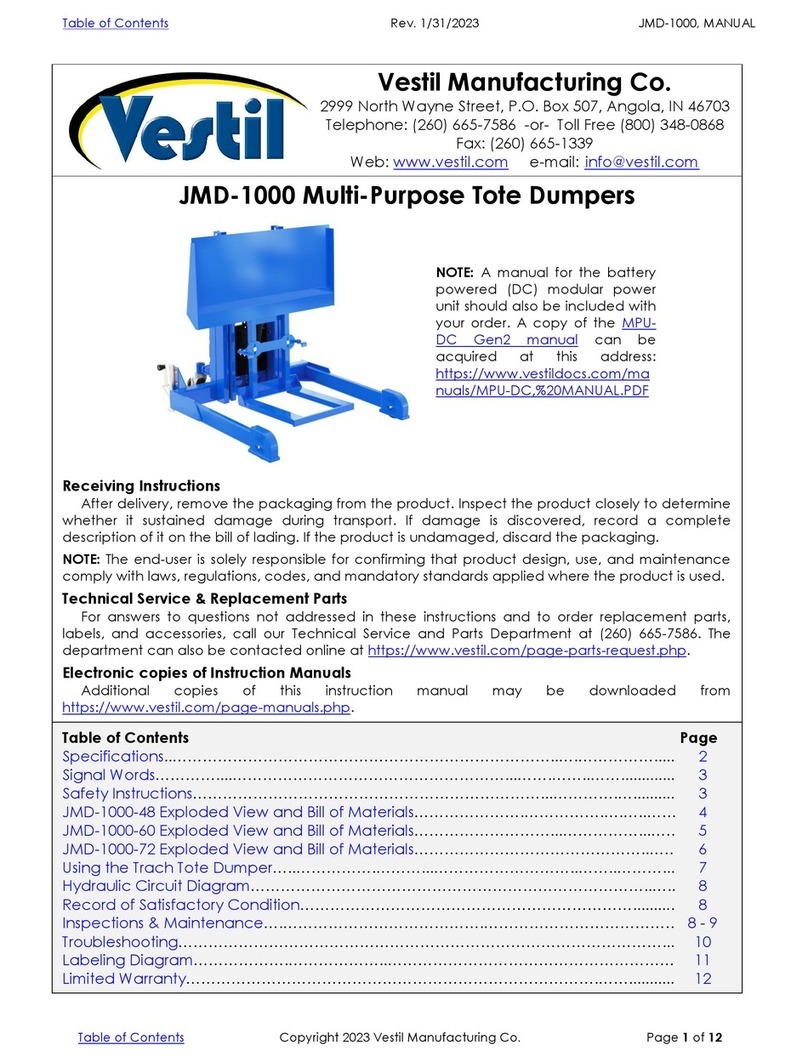
Vestil
Vestil JMD-1000 User manual
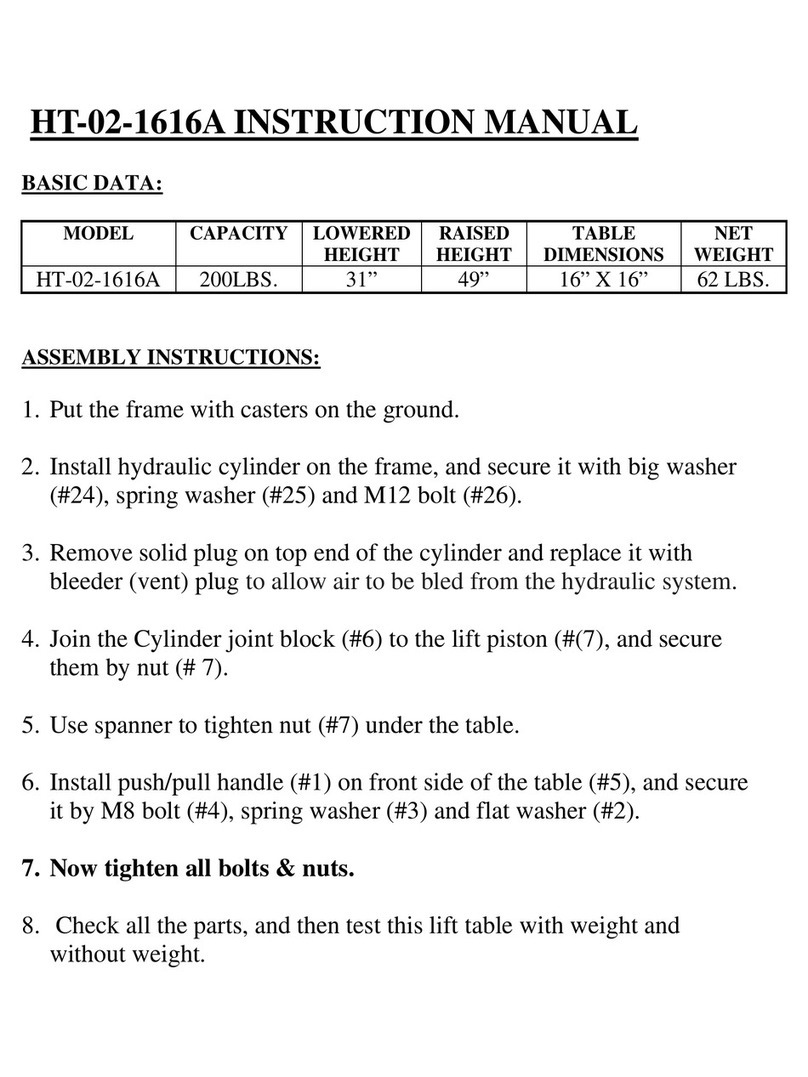
Vestil
Vestil HT-02-1616A User manual

Vestil
Vestil RR Series User manual
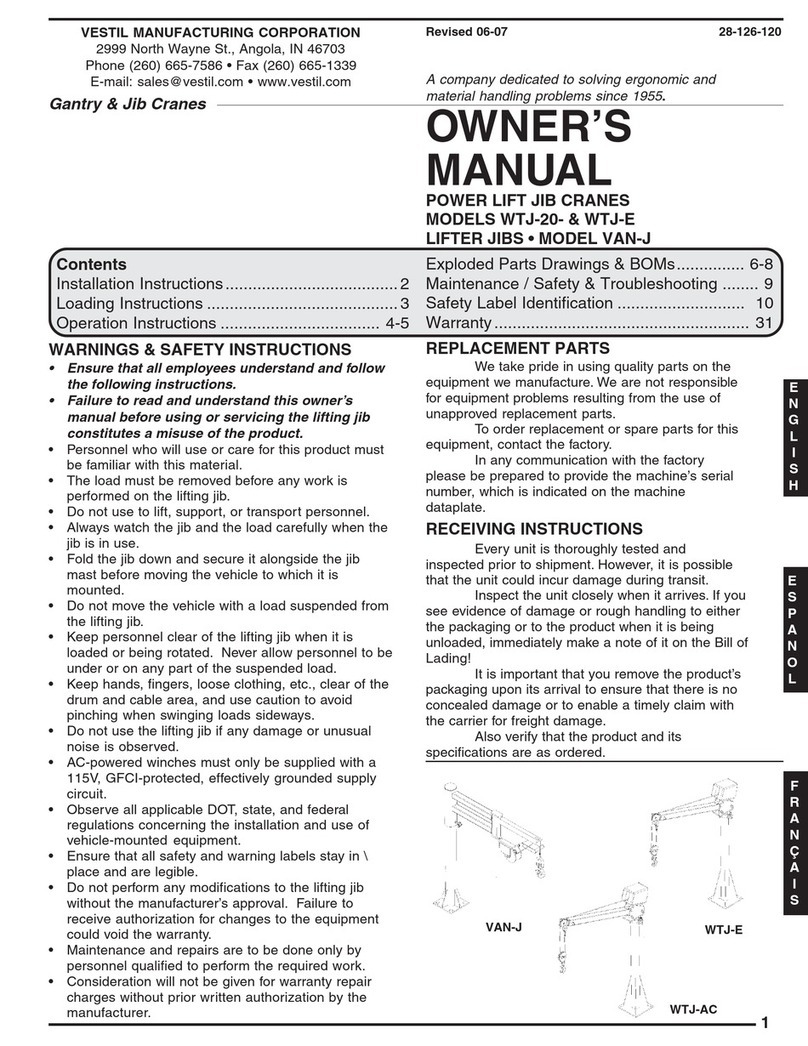
Vestil
Vestil WTJ-20-3 Series User manual
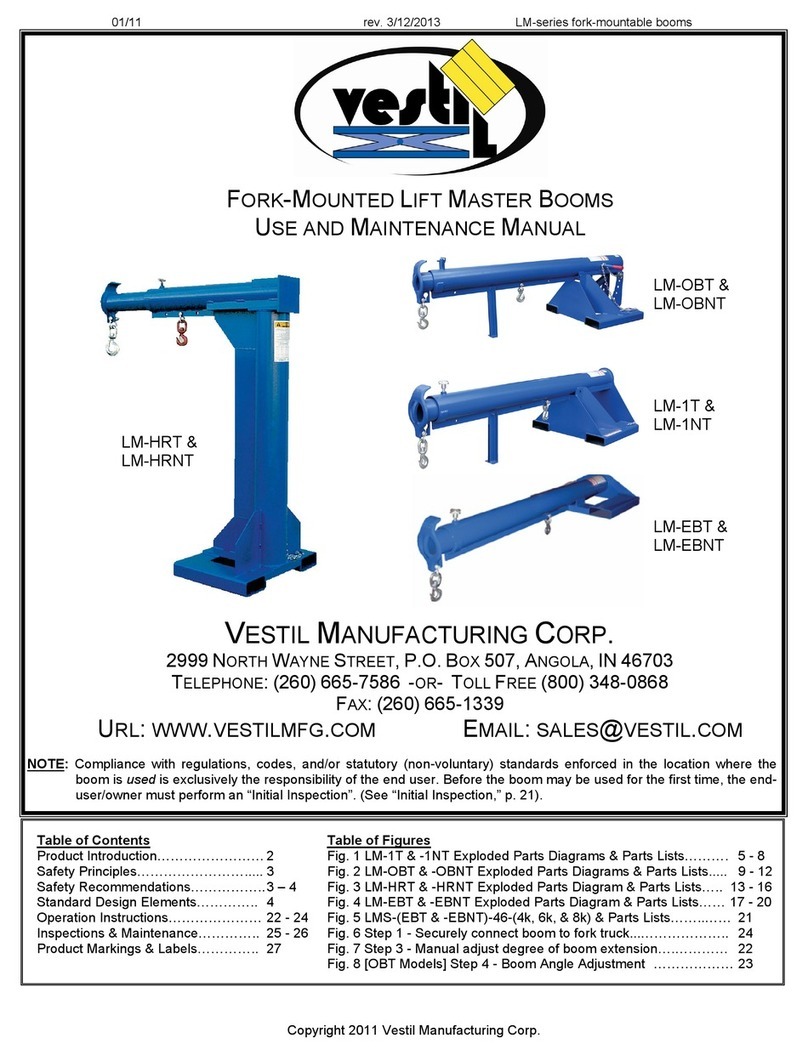
Vestil
Vestil LM-HRT User manual

Vestil
Vestil CYL-P Series User manual

Vestil
Vestil CYL-D-1-PN User manual

Vestil
Vestil EPC Series User manual
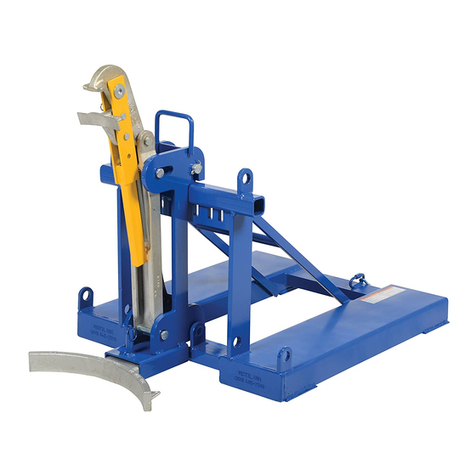
Vestil
Vestil FMDL Series User manual

Vestil
Vestil HLD Series User manual
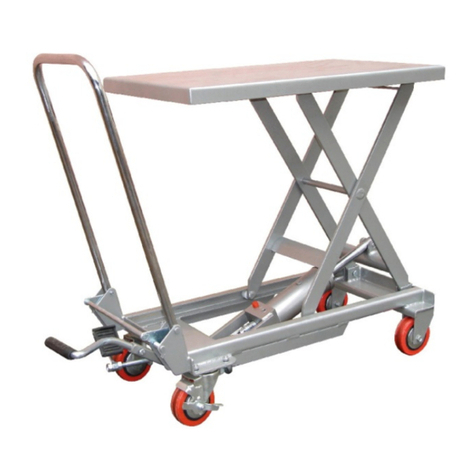
Vestil
Vestil CART-200-ALUM User manual
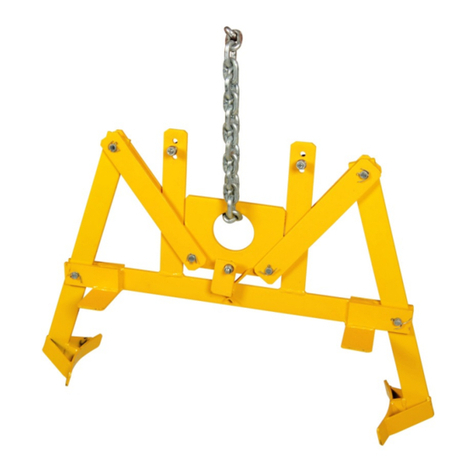
Vestil
Vestil VDL-22.5 User manual
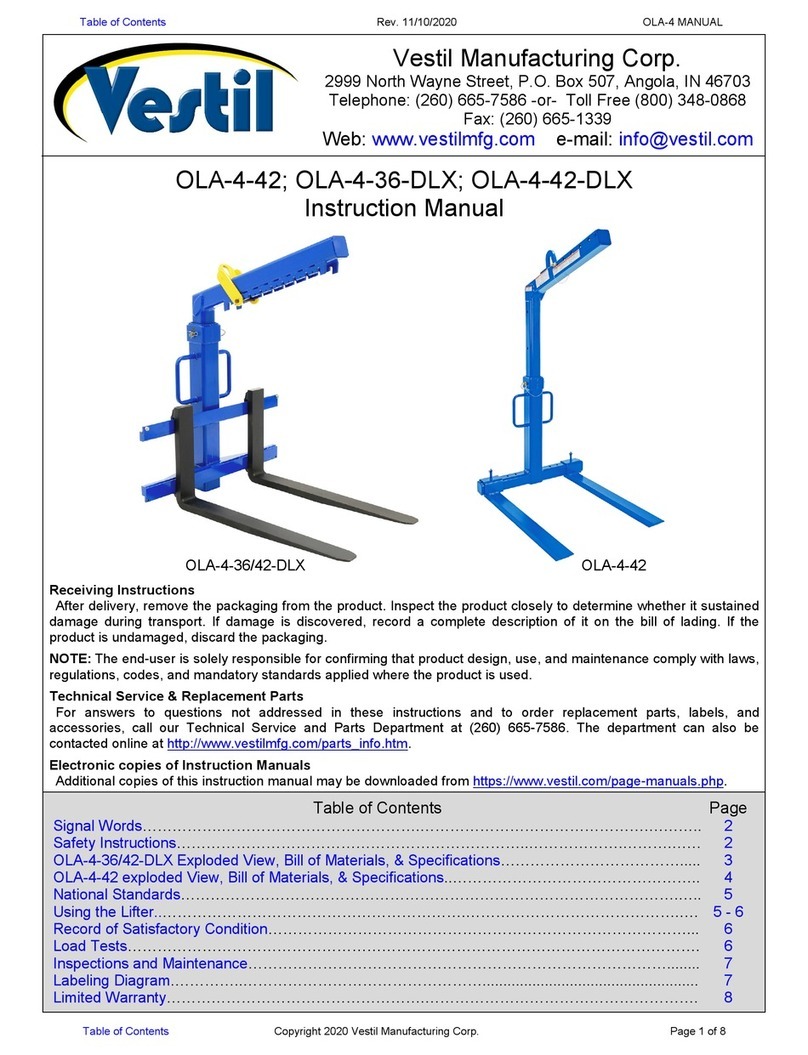
Vestil
Vestil OLA-4-42 User manual

Vestil
Vestil DCT-85 User manual

Vestil
Vestil FM-0648 User manual
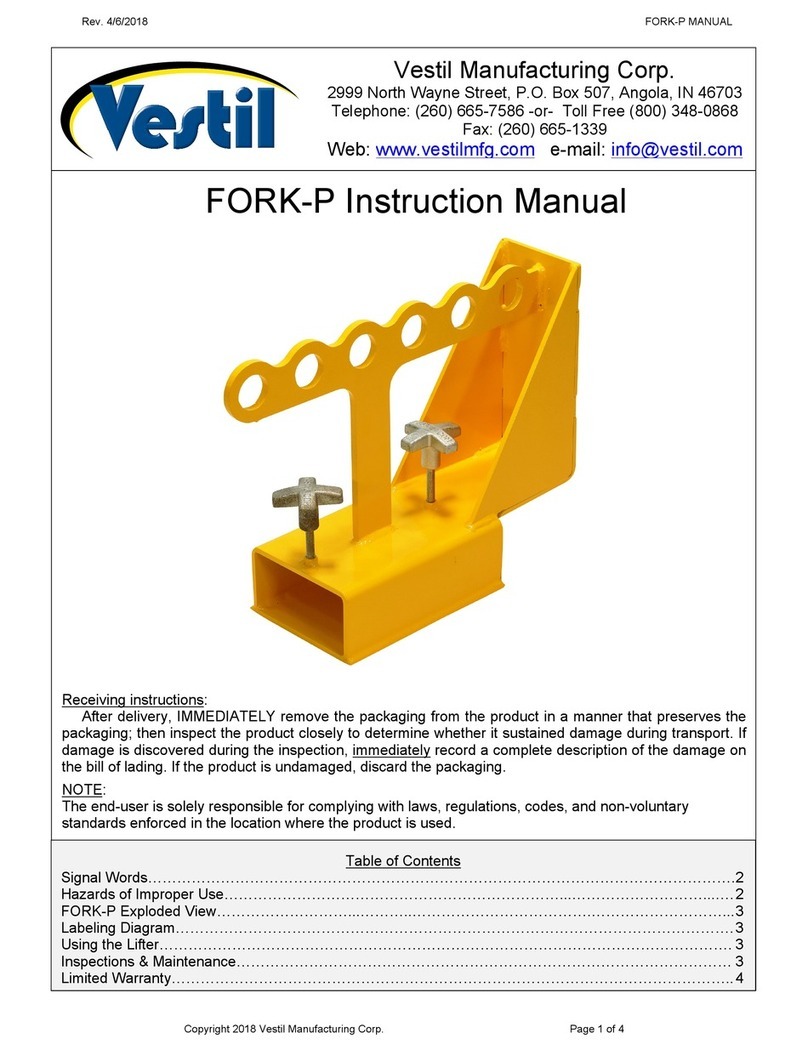
Vestil
Vestil FORK-P User manual

Vestil
Vestil AIR-1500-D User manual
Popular Lifting System manuals by other brands

probst
probst SDH-H-15 operating instructions

Bruno
Bruno OUTDOOR ELITE CRE-2110E Operator's manual

matev
matev FPS Mounting Assembly Installation Guide

Butts Tools
Butts Tools BXS0002 operating instructions

Safelift
Safelift MoveAround MA60 Original instructions

Terex
Terex Genie Z452513A-48153 Service and repair manual

Nova Technology International, LLC
Nova Technology International, LLC NAS Series quick start guide

Genie
Genie Z-60/34 Operator's manual

Screen Technics
Screen Technics INTERFIT Vertical Up Lift instructions

Drive
Drive DUPONT SAMERY Hermes user manual

Custom Equipment
Custom Equipment Hy-Brid 3 Series MAINTENANCE & TROUBLESHOOTING MANUAL

Custom Equipment
Custom Equipment Hy-Brid Lifts 2 Series Maintenance and troubleshooting manual

